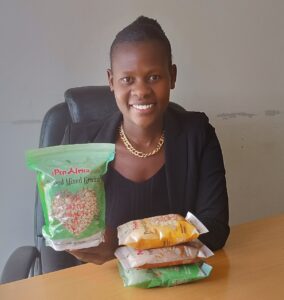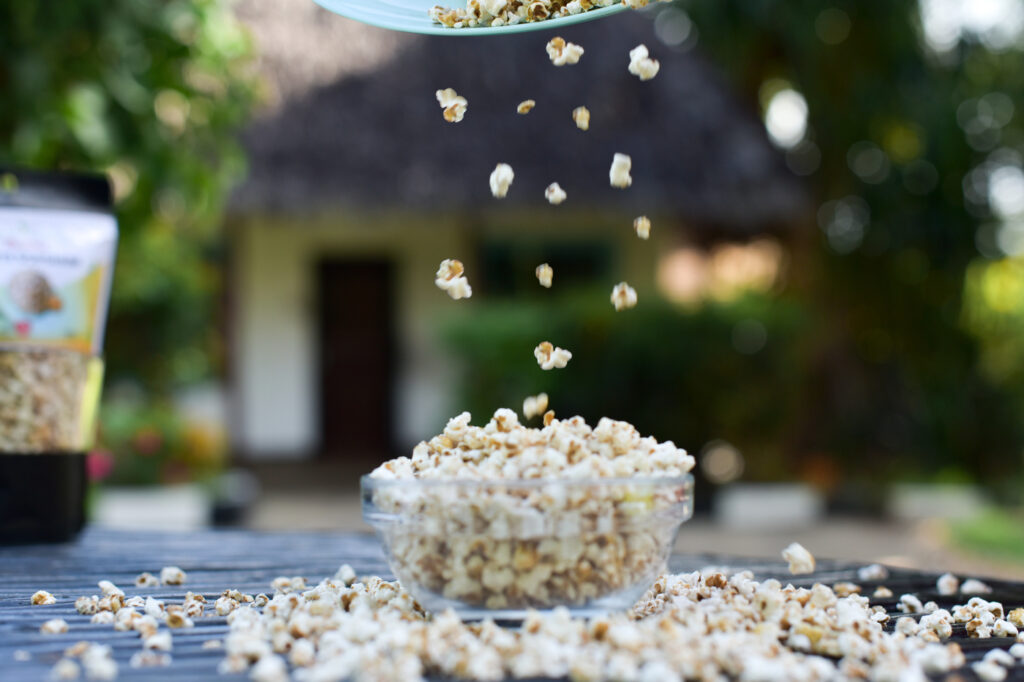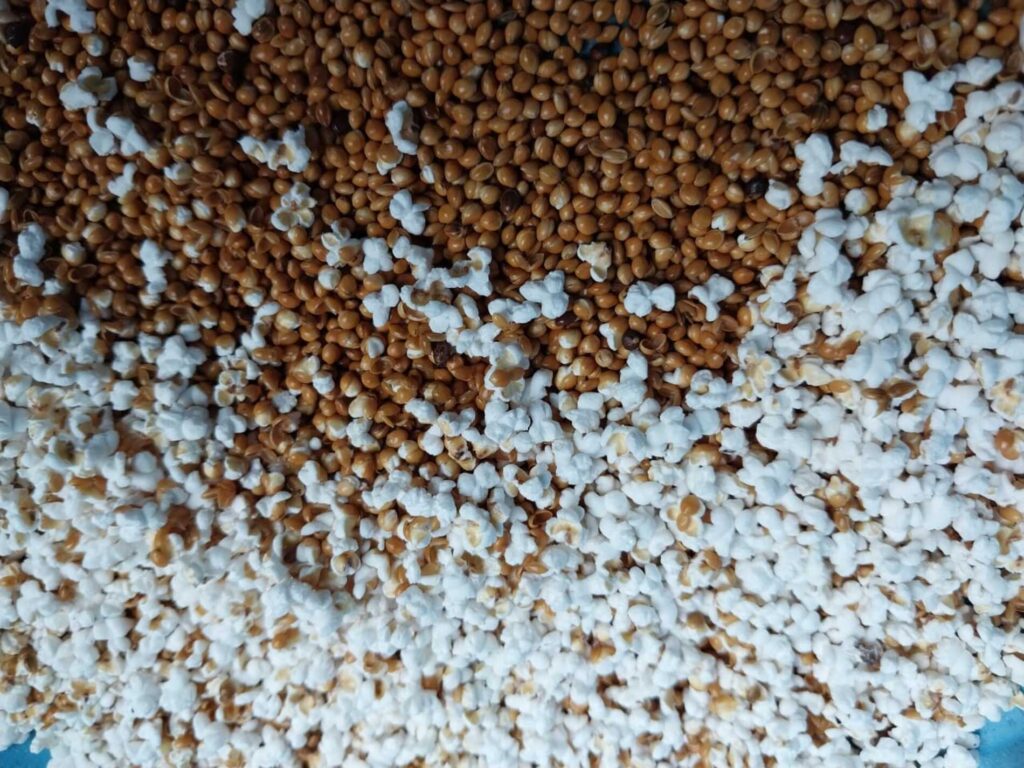 Dorah Momanyi, is the founder of the Nutritious Agriculture Network in Kenya. In her work, she re-establishes the use of indigenous grains, such as sorghum, amaranth and millet, by making plant-based snacks.
Dorah Momanyi, is the founder of the Nutritious Agriculture Network in Kenya. In her work, she re-establishes the use of indigenous grains, such as sorghum, amaranth and millet, by making plant-based snacks.
What is millets’ cultural and social significance in traditional diets and culinary practices in Kenya?
Millets are still considered food for people experiencing poverty. Millennials and Generation Z actually cannot even identify the type of millet in Kenya. They shy away and scorn millet as food for our ancestors.
In the Kisii and Luo community, millet is a significant crop used in traditional ceremonies that lead up to weddings.
How do you see the conversation around food sovereignty in Kenya? What do you think are the implications of losing local seed varieties for food security in the future?
The climate change conversation in Kenya mainly revolves around planting trees. Little effort has been put into conserving indigenous food systems. Just recently, a few organizations collaborated to start the process of developing an indigenous food systems policy.
Some research institutes, including the Kenya Agricultural and Livestock Research Organization (KALRO), are focusing on traditional indigenous grains and African leafy vegetables. The momentum geared towards funding startups in the indigenous food space is just beginning to take its footing.
How can we encourage youth to reconnect to their food and be invested in where it is coming from?
We need to educate young people on the benefits of traditional foods, including their nutritional and economic value. We should also monetize these benefits. Moreover, I think that we should provide young tech-savvy individuals with the necessary tools to transform traditional foods into exciting new ones.
What are the challenges and constraints faced in the production, marketing, and consumption of millets in your region?
It is important to note that despite the availability of many cereal options, people still tend to choose alternative cereals. In Kenya, for example, maize is the staple food, and it is challenging to change the consumption patterns of a population.
Moreover, millet planting, harvesting, threshing, and storage are all done manually, which makes it a tedious process. Due to the lack of adequate markets and low returns, many large-scale farmers avoid cultivating it.
The consumption of common millet-based products, such as porridge and ugali, is low as they are not attractive to eat. Additionally, they are typically only consumed as a main meal and porridge is only eaten occasionally.

